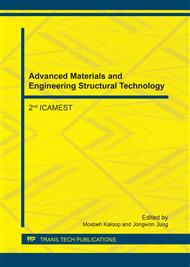p.218
p.224
p.231
p.237
p.242
p.249
p.254
p.258
p.264
Study on Task Optimization of Distributed Gas-Electric Hybrid Control System
Abstract:
Refer to the task allocating and optimization problem of distributed gas-electric hybrid control system, this paper establishes graph model of system hardware structure and application event of the distributed real-time control. The task allocation in distributed application process is abstract as mapping between those two sets. A task allocation scheme of minimum load bus is proposed from the angles of system bus and message mapping. Combined with the design of the gas-electric hybrid power system, genetic algorithm is adopted to solve the optimization problem, and the program verification and the bus analysis are carried out on the experimental bench. The test results show that the proposed scheme can satisfy all kinds of task constraints and resource constraints, the efficiency of the bus is improved, and consumption of resources is reduced.
Info:
Periodical:
Pages:
242-248
Citation:
Online since:
April 2017
Authors:
Price:
Сopyright:
© 2017 Trans Tech Publications Ltd. All Rights Reserved
Share:
Citation:


